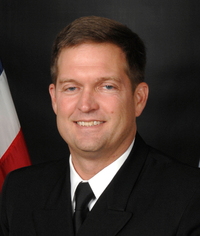 As an 18-year member of the Society, what keeps you coming back?
As an 18-year member of the Society, what keeps you coming back?
ASTMH is an important professional society. It is the best place to come for education, professional development and interdisciplinary collaboration in the complex and diverse areas of tropical medicine.
In the Navy, you have a built-in network of scientific colleagues. How does membership in ASTMH complement this network?
Navy Medicine Research is fortunate to have outstanding clinicians and researchers, but we also know that there are leaders in tropical medicine and young scientists with novel ideas outside our system. ASTMH provides us this rich and available community of colleagues and collaborators from academia, NGOs and other government organizations--relationships that add so much to our collective success that we schedule Navy Medicine Research meetings with the Annual Meeting to include our collaborators.
The Navy's R&D efforts are located around the world. How does ASTMH fit in?
We currently have three laboratories--NAMRU-2, -3 and -6--all developed in partnership with host nations. We are conducting collaborative projects in dozens of countries throughout the Middle East, Africa, Southeast Asia and the Americas. We are particularly pleased that we are able to provide opportunities for young researchers from the U.S. and countries where we work to further their careers. ASTMH has been a key partner in these efforts. We routinely point to the Annual Meeting as the keystone for our staff and collaborators to highlight their work, meet collaborators and establish professional connections. ASTMH connections have also led to other educational/career opportunities for our staff.
While you were at Naval Medical Research Unit-6 in Lima, Peru, the Society joined with NAMRU-6 to showcase research presented at the ASTMH Annual Meeting. Why did this work?
There is a very strong research community in Peru that regularly presents an array of high quality research results and posters at the Annual Meetings, however, many involved in those projects--and many more who can learn from the research presented--were unable to travel to the meeting. So we approached the Society in 2010 with the idea of presenting the Peru studies--in Spanish--at a local meeting. The Society leadership and the local research community embraced this suggestion, and Dr. Alan Magill, representing the Society, opened the "ASTMH in Peru" conference in 2011. This interchange afforded time for direct conversations with investigators and students, and a number of recommendations were offered for continued work. The “pride of ownership” was evident and inspiring for all. There is significant enthusiasm for a third annual Peru meeting.
Many don't know that ASTMH has a strong clinical constituency. How have you married research and clinical into your career?
Ongoing research is critical to the practice of medicine. The Navy has given me an opportunity to participate in clinical research studies in Thailand, Egypt and Peru, enabling me to work with fantastic local physicians from whom I continue to learn about patient care. Thanks to the Navy’s commitment to teaching tropical medicine, I've been in the role of student and instructor in several classes and in the Gorgas Course. I have practiced at great hospitals, such as Bethesda Naval Hospital and Walter Reed Army Medical Center, where I have cared for people planning to travel abroad or returning from trips with interesting mementos such as fevers and rashes.
Campuses are overflowing with young people looking to global health as a career. What is your advice to them and how can ASTMH help them build their career?
When I was in those same shoes as young people today, I was encouraged to join ASTMH by Dr. Barney Cline, a past president. He told me that membership would help me meet colleagues and find opportunities for work. He was correct then, and his advice is true today. With so many opportunities--programs, clinical care and research--teasing out the options can be daunting. This is where ASTMH serves a key role by bringing people from multiple disciplines with a shared interest in global health/tropical medicine together and promoting continued growth in the field.